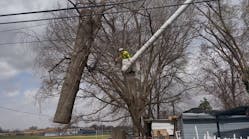The National Safety Council (NSC) is celebrating the 25th anniversary of National Safety Month this year, an annual observance to help keep each other safe from the workplace to anyplace. While June is an excellent opportunity to brush up on best practices, in our industry, safety must remain at the foundation of everything we do and why we do it — year-round.
In observance, NSC broke National Safety Month into four weekly categories:
1. Prevent incidents before they start
2. Address ongoing COVID-19 safety concerns
3. It’s vital to feel safe on the job
4. Advance your safety journey
Let’s take a closer look at the four topics.
Prevent Incidents Before They Start
As a health and safety manager, I often think of S.T.A.R. (Stop, Think, Act, Review) — a simple principle aimed to create a trigger to promote proactive safety, rather than engage in reactive safety measures. To encourage awareness, understanding of individual responsibility, and accountability regarding safety, the S.T.A.R. principle encourages every person to take ownership of their own safety choices.
With an alert safety and security attitude, painful and costly incidents can be avoided. The right “attitude” means always thinking about what could go wrong.
Conducting S.T.A.R. helps improve employees’ situational awareness and develops an accurate understanding of critical indicators. It serves as a quick assessment of the immediate work environment and detects unanticipated conditions by work planning.
Being aware of your surroundings and conducting pre-job briefings every time the conditions change are key to maintaining the safety of yourself and others.
Stop: Before acting, stop long enough to think about the task being performed.
Think: Take time to think and identify the safest choice.
Act: Once the best choice has been determined, act upon it accordingly. This is the “act of making choices” – act in a way that will not harm yourself or others.
Review: After acting, review the outcome of actions taken. Ask:
- Did my action(s) accomplish my task?
- If my actions failed, how do I perform the task safely next time?
- What did I learn from this task and areas to improve when I perform the same task next time?
Address Ongoing COVID-19 Safety Concerns
To say the events of the past year have been a challenge would be an understatement. At the beginning of the pandemic, our teams across the ACRT Services family of companies discussed the cliché that the pandemic would be a marathon, not a sprint. Many times, marathon runners “hit the wall” and either overcome it or fail to. Being resilient and understanding that you can push through the wall is important. Our industry has the support of one another and training to finish the race — all we have to do is stay focused and determined to let anything stand in our way. It can be tempting to take shortcuts or drop your guard, even when others around you are.
Always ask: Is this task so critical that I must take the risk and break from protocol? We should continue to be creative in finding safer ways to accomplish our daily tasks. It is easier to do the opposite — to accept the risk and roll the dice with your safety. How hard are you willing to work to accomplish the job safely? How much effort are you willing to put into keeping yourself and others safe? Dig deep, climb over the wall, go around it, and finish the race strong.
Consider visiting the Centers for Disease Control and Prevention COVID-19 webpage for information on vaccines, travel guidelines, symptoms, and more. For those who may be hitting the road or skies for work, check out the CDC’s Travel Planner for state, local, tribal, and territorial government restrictions before traveling.
It’s Vital to Feel Safe on the Job
In our organization, we’ve taken on a process referred to as near-miss reporting. We define near misses as an event that could have caused personal injury, illness, or property damage — no matter how slight, arising from the course of employment with the company. These are leading indicators that identify bad behaviors, observed hazards, missing equipment, training deficiencies, and opportunities to improve the safety within our jobs before an incident happens.
Over the past few years, reporting has improved dramatically, as our employees have grown to see the value of quickly identifying trends and taking actions to prevent harm.
Do you know how to report a safety concern within your organization? Help continue to grow our industry’s culture of safety by reporting your experiences so we can learn from each other and improve our ability to send everyone home safely.
Advance Your Safety Journey
Take opportunities to train, learn every chance you get. A world-class culture of safety requires a significant amount of time and energy to deliver a return on investment. When we think about our family, friends, and peers, justifying that expense is easy to do.
Taking time to care for yourself and others is important. Making safety a core value of who you are and what you do is the best way to be there for those in your lives.
Remember to put safety first not just during National Safety Month, but rather the entire year.


